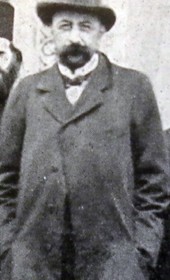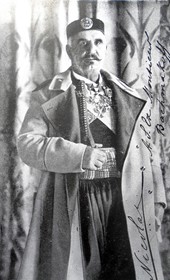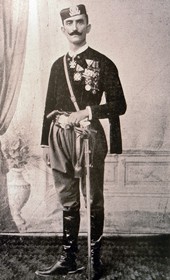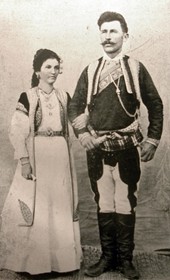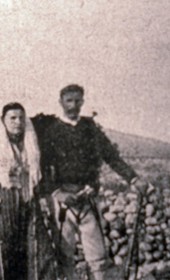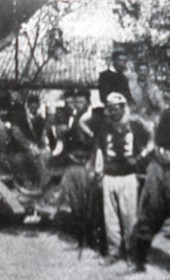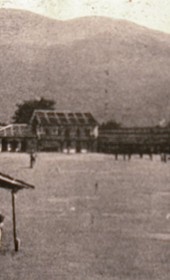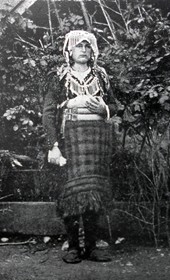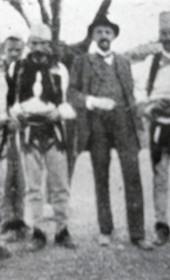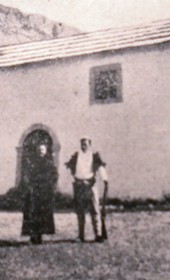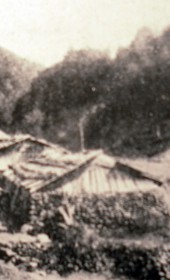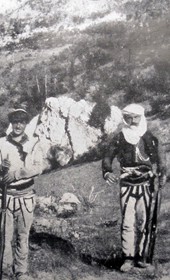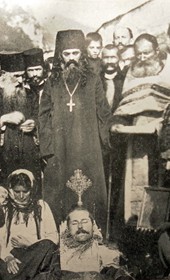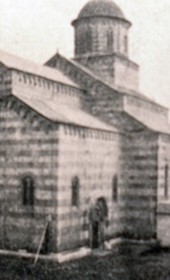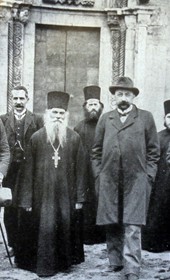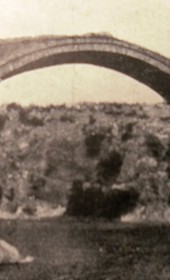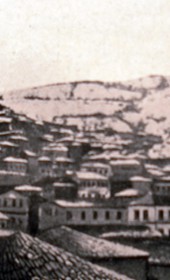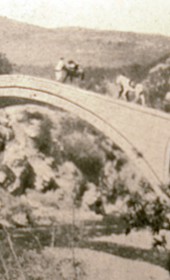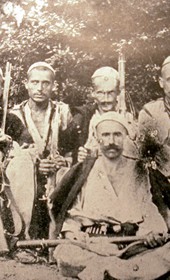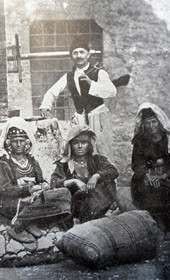| | Robert Elsie | AL Art | AL History | AL Language | AL Literature | AL Photography | Contact | |
Robert Elsie
Early Photography in Albania
BACK | AL Photography
The Photo Collection
of Alexandre Baschmakoff
Deutsch | ShqipMontenegro, Northern Albania
and Kosovo in 1908Alexandre Baschmakoff (1858-1943), known in Russian as Aleksandr Aleksandrovič Bašmakov, was a Russian scholar who lived in France, at least from the time of the Russian Revolution. He is remembered for his French-language book, “A travers le Monténégro et le pays des Guègues” [Through Montenegro and the Land of the Ghegs], St. Petersburg 1911, an account of his journey through Montenegro, northern Albania and Kosovo in September and October 1908 to survey the region for a railway line that would link Serbia and the Adriatic Sea. The journey took him from Cetinje to Tuz, up the Cem [Cijevna] River valley through Gruda and Kelmendi territory to Gucia [Gusinje] and Plava [Plav], and over the Rugova Pass into Kosovo, where he visited Peja, Deçani, Gjakova and Prizren. From Prizren he returned to the coast via Kukës, Puka, Vau i Dejës and Shëngjin. For a foreigner, and in particular for a Russian among the lawless, gun-toting Ghegs, the journey was fraught with danger and he was thankful for the assistance and loyalty of his Albanian guide, Zef Doda of Triepshi. Nothing came of his railway project, but numerous photos of varying quality have remained of his trip. In later years, Baschmakoff was professor at the School of Anthropology in Paris, published some works on the peoples living around the Black Sea, and seems to have died at Saint-Geneviève-des-Bois (Essonne), south of Paris, where there is a Russian Orthodox cemetery.
Die Fotosammlung des Alexandre Baschmakoff
English | ShqipMontenegro, Nordalbanien und Kosovo im Jahre 1908
Alexandre Baschmakoff (1858-1943), russisch Aleksandr Aleksandrovič Bašmakov, war ein russischer Gelehrter, der in etwa ab der Zeit der Russischen Revolution in Frankreich lebte. Bekannt war er für sein französischsprachiges Buch, “A travers le Monténégro et le pays des Guègues” [Durch Montenegro und das Land der Gegen], Sankt Petersburg 1911, eine Schilderung seiner Reise durch Montenegro, Nordalbanien und Kosovo im September und Oktober 1908. Er unternahm diese Reise mit der Absicht, die Möglichkeit einer Bahntrasse durch das betreffende Gebiet zu erörtern, die Serbien mit der Adria verbunden hätte. Von der montenegrinischen Hauptstadt Cetinje ritt er nach Tuz, durch das Cem/Cijevna-Tal, Gruda und Kelmendi nach Gucia/Gusinje und Plava/Plav, und dann durch die Rugova-Schlucht nach Kosovo, wo er Peja, Deçani, Gjakova und Prizren besuchte. Von Prizren kehrte er zur Küste über Kukës, Puka, Vau i Dejës und Shëngjin zurück. Für einen Ausländer und insbesondere für einen Russen war eine solche Reise durch das Gebiet der schießwütigen Hochlandalbaner nicht ohne Gefahr. In diesem Zusammenhang war er für die Unterstützung und Treue seines albanischen Begleiters, Zef Doda aus Triepshi, sehr dankbar. Aus dem Eisenbahnprojekt wurde nichts. Geblieben sind aber zahlreiche Fotografien von unterschiedlicher Qualität, die er während der Reise machte und die hier zum großen Teil vorgestellt werden. In späteren Jahren war Baschmakoff als Professor an der Ecole d’Anthropologie in Paris tätig und veröffentlichte einige Schriften über die Völker des Schwarzmeerraumes. Er starb in Saint-Geneviève-des-Bois (Essonne), südlich von Paris, wo es einen russisch-orthodoxen Friedhof gibt.
Koleksioni fotografik i Aleksandër Bashmakovit
(Alexandre Baschmakoff)
English | DeutschMali i Zi, Shqipëria e Veriut dhe Kosova në vitin 1908
Aleksandër Aleksandroviç Bashmakov (1858-1943) ishte shkencëtar rus i cili të paktën prej kohës së revolucionit rus, jetoi në Francë. Njihet për librin frëngjisht “A travers le Monténégro et le pays des Guègues” [Nëpërmjet Malit të Zi dhe trevave të gegëve], San Petersburg 1911, një përshkrim i udhëtimit të tij në Malin e Zi, në Malësinë e Madhe të Shqipërisë dhe në Kosovë në shtator dhe tetor të vitit 1908. Qëllimi i udhëtimit ishte projekti i një linjeje hekurudhore e cila do të kishte lidhur Serbinë me detin Adriatik. Nga Cetinje Bashmakovi kaloi në Tuz, në luginën e Cemit, Grudë, Kelmend, Guci, Plavë, dhe në Rugovë për në Kosovë. Atje vizitoi Pejën, Deçanin, Gjakovën dhe Prizrenin. Nga Prizreni u kthye në bregdet nëpërmjet Kukësit, Pukës, Vaut të Dejës dhe Shëngjinit. Si i huaj, dhe veçanërisht si rus, udhëtimi në trevat e gegëve të armatosur ishte tepër i rrezikshëm dhe Bashmakovi ishte mirënjohës për mbështetjen dhe besnikërinë e shoqëruesit të tij shqiptar, Zef Doda, nga Triepshi. Nga plani për një linjë hekurudhore nuk rezultoi asgjë, por ka mbetur një sasi fotografish të cilësive të ndryshme që paraqiten pjesërisht këtu. Në vitet e mëvonshme, Bashmakovi punoi profesor në Shkollën e Antropologisë në Paris, ku botoi disa vepra, kryesisht për popujt e Detit të Zi. Me sa duket, vdiq në San Xhenëviev-de-Bua (Saint-Geneviève-des-Bois) në jug të Parisit, ku ka edhe varreza ortodokse ruse.
TOP
